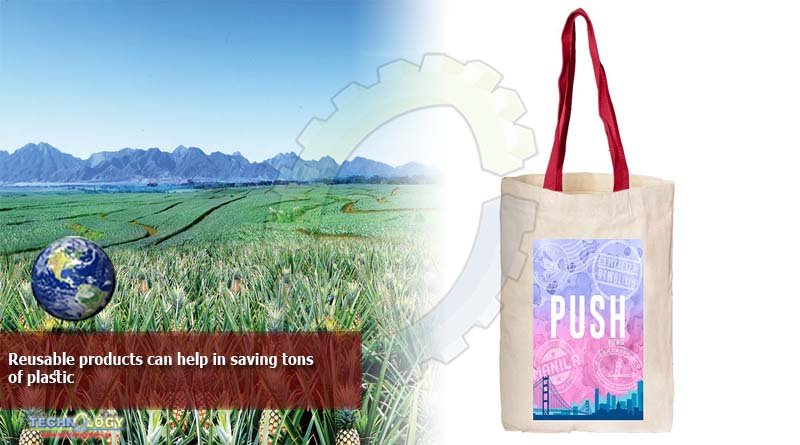While garbage taking over our oceans is certainly old news, the tons of plastic waste threatening marine life skyrocketed due to the coronavirus pandemic.

According to the United Nations Environment Programme, before the COVID-19 outbreak, approximately 300 million tons of plastic waste were produced yearly. The United Nations Conference on Trade and Development (UNCTAD), however, said the spike in the daily use of masks, gloves, and PPEs, as well as the increase in products wrapped in plastic packaging being delivered to homes, further devastated the already ailing condition of the planet.
UNEP approximated at least 11 million tons of the aforementioned plastic waste leak into the oceans yearly, but if no action is taken, the number could nearly triple to 29 million tons per annum in 2040. Meanwhile, by 2050, the UN body also warned plastic waste could outnumber the fish.
UNEP noted about half of the said pollution comes from just five countries: China, Indonesia, Philippines, Thailand and Vietnam.
In the Philippines, a research conducted by the #BreakFreeFromPlasticMovement revealed the average Filipino produces around 208 kilos of waste annually, while an entire household yields an estimated total of 1,040 kilos of trash.
Experts and advocates alike had been pleading with the public to cut their plastic consumption for years. Although it is a no-brainer transitioning to a zero-waste lifestyle can help cut one’s plastic footprint, it is no doubt a challenging commitment.
If saving the planet, however, is not enough incentive to practice a more sustainable lifestyle, the i-Price Group, acknowledging it would be difficult to break the long-standing plastic habit, conducted a study on how much money Filipinos could save annually if they ditch disposables and switch to resuable products instead.
The price comparison platform learned that the average woman could save as much as P4,600, while a man could keep around P2,500 every year.
“Investing in items that replace plastic waste and disposables may seem like such a commitment, but it could cost the world a whole lot less, if you do the math,” the i-Price Group said.
While face coverings continue to be required in the new normal to stem the spread of COVOD-19, conservationists implore the public to opt for reusable masks instead. Similarly, the Centers for Disease Control and Prevention (CDC) reiterates disposable masks such as the N95 respirator and surgical masks should only be reserved for healthcare workers.
According to the i-Price Group, the shift may save Filipinos about P1,221 annually. The e-commerce aggregator said the average price of 365 disposable masks (assuming an individual uses at least one mask daily) would cost around P1,631. Investing in a pack of reusable masks, however, would only cost P411.
“COVID-19 has given us an additional essential cost for face masks. Disposable masks don’t come in cheap, especially the good-quality 3-plies,” the price comparison platform explained.
While some may be hesitant to shift to washable masks, CDC said these coverings can likewise slow the spread of the coronavirus provided they have “two or more layers of breathable fabric, completely cover the nose and mouth, and fit snugly against the side of the face without any gaps.” Cloth masks with exhalation valves and vents, however, should be avoided because they enable virus particles to escape.
UNCTAD, estimated that global sales of disposable masks will total to US$166 billion this year, a huge leap from around US$800 million in 2019. The UN body stressed if “if historical data is a reliable indicator, it can be expected that around 75 percent of the masks, as well as other pandemic-related waste, will end up in landfills, or floating in the seas.”
In the country, due to the pandemic, the Asian Development Bank (ADB) in April predicted Metro Manila hospitals will produce an additional 280 metric tons of medical waste daily. The figure does not include the waste generated by millions of private citizens.
A individual committed to using cloth coverings, on the other hand, can reduce the number of disposable masks being discarded (and hopefully produced) by the hundreds. While the digits may not seem enormous, it is still several hundred pieces masks that will be kept off the streets and seas.
According to Wen, an environmental justice group campaigning for equal access to knowledge, resources and opportunities for women, certain menstrual pads are made of 90 percent percent plastic. Hence, like most of its kind, the time it will take for a single pad to decompose will be longer than the lifespan of the woman who used it.
Although menstrual cups, a more economical and eco-friendly option for period management, have been around for decades, it remains unpopular and even unknown for some women.
Data gathered by i-Price suggested high quality cups made out of medical grade silicon may be reused for up to 10 years — this means the accumulated cost of cup advocates is a fraction of those opting for a tampon or pad.
The online shopping aggregator found that the average price of a menstrual cup is P772, while the average price of a year’s worth of disposable menstrual pads on i-Price’s platform is P 2,833.
Aside from saving P2,061 annually, i-Price suggested women who switch to the cup may reduce the accumulated sanitary waste by roughly 240 pads every year.
In the United Kingdom alone, WEN reported approximately 200,000 tons of menstrual waste (including tampons, pads and applicators) are produced per annum.
While many remain skeptical of the silicone cups due to misinformation, lack of awareness and even taboo surrounding periods, a study published by medical journal Lancet found menstrual cups to be as safe and effective as traditional sanitary products.
Data gathered by iPrice suggested a year’s worth of plastic bags would cost about P1,652, while investing in a tote bag that would last several years would only cost about P883.
“Consumers may even find a cheaper, more practical tote bag than the average one on iPrice’s platform, as stylish tote bags were also part of the platform’s database,” the group reasoned.
Other reusable bag alternatives such as eco bags retail for as low as P15 online.
While most stores do not charge for their plastic packaging, investing in a washable bag can greatly reduce plastic pollution churned out by the country.
According to waste assessment and brand audit published in 2019 by the Global Alliance for Incinerator Alternatives, an average Filipino uses approximately 174 shopping bags, and 163 plastic labo bags annually.
Collectively, the same study revealed nearly 48 million shopping bags and 45.2 million pieces of plastic labo bags used throughout the Philippines daily or a total of 17.5 billion pieces and 16.5 billion pieces shopping and labo bags are consumed annually.
According to the Strawless Ocean, a campaign developed by the Lonely Whale Foundation, Americans use around 500 million drinking straws daily. Unfortunately, the group explained “most plastic straws are too lightweight to make it through the mechanical recycling sorter.” Hence, a large chunk of it ends up in the ocean.
I-Price estimated a year’s worth of plastic straws for a single individual in the country would amount to P712. The shopping aggregator, however, noted since the average person “wouldn’t really pay for plastic straws in restaurants or boba stalls,” discarding the item may be a “cost and waste-reducer for restaurant owners.”
While committing to metal straws which retail for around P259 (P453 cheaper than the price of disposable straws) will definitely reduce the waste floating in the oceans, in 2018, researchers from Humboldt State University in Arcata, California, discovered that not only does it take more energy to produce reusable straws compared to single-use plastic straws but it also releases more carbon dioxide, a greenhouse gas responsible for climate change.
According to the research, “the stainless steel straw has a higher impact in regards to both energy and carbon dioxide, while the glass straws have a positive impact in energy, but the carbon dioxide emissions are still greater than providing plastic straws.”
Thus, many activists encourage consumers to just remove straws from their drinking habits entirely.
Chopsticks are an important component of Asian cuisine — and with dining in as the new normal, disposable chopsticks might be an addition to the shopping list of Filipinos hoping to enjoy their homemade samgyupsal or sushi meal.
I-Price, however, said opting for a reusable chopstick could save shoppers about 100 every year.
“If an average Filipino uses 100 pieces of chopsticks a year, half of how much a Chinese uses, according to a study, would cost them about P302,” the group said.
I-Price added the product catalogs they scoured indicated investing in reusable chopsticks would only cost around P202.
“Not everyone necessarily purchases their own disposable chopsticks. Thus, this figure could also be an indicator for restaurant owners to go greener,” the online platform shared.
Albeit most chopsticks decompose faster than plastics, it is likewise an environmental nightmare. While the amount is small, the impact of boycotting the disposable chopsticks is more than just saving a few pesos and lessening your trash as the production of the disposable cutlery.
As early as 2009, news of China’s insatiable demand for disposable chopsticks threatening its forestry surfaced. According to reports, an estimate of 57 billion pairs of chopsticks were manufactured annually requiring about 1.18 million square meters of forest to be cut down.
Aside from eliminating plastic waste, environmental advocates urged the public to also to be mindful of how the products they buy are sourced and to be vigilant of their carbon footprint as well by travelling more sustainably, purchasing items for delivery from the nearest store, saving energy, reducing meat consumption, etc.
While every citizen is steward for the planet, most green groups argue the government and companies have a bigger role to play in saving it.
According to the United Nations, plastic pollution, for example, could be reduced by as much as 80 percent if governing bodies and private corporations “replace inadequate regulation, change business models and introduce incentives leading to the reduced production of plastics, design products and packaging easier to recycle, and expand waste collection, particularly in lower income countries.”
Originally published by ABS-CBN
